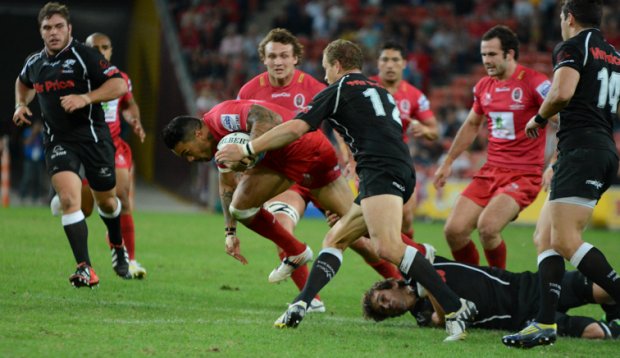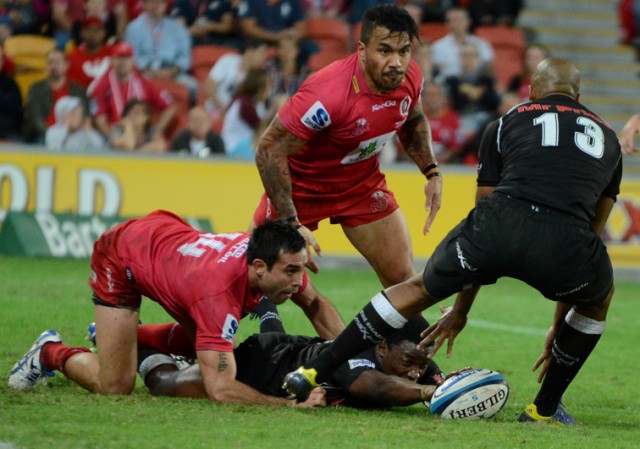Playing in Europe used to be seen as little more than a golden handshake for veteran national players (Australians, New Zealanders, and South Africans alike). Many eminent names from Matthew Burke to George Gregan ended their careers overseas. They left after long service at the highest level (81 and 139 caps for these two). There was never any expectation of them returning to play in Australia. Player and national union alike were largely fine with this arrangement.
But this pattern is changing fast. This article will compare the old patterns and the new trends in players leaving the southern hemisphere to play in Europe, illustrate why these changes pose a threat to the national team, and finally offer some suggestion as to what the Australian Rugby Union could do to stem the tide.
The old and the new
It remains easy to look down upon the quality of the northern hemisphere leagues. In just the last couple of years, doctors at Super Rugby teams dignosed Rocky Elsom and Juan Smith with chronic injuries; Elsom could not convince doctors at a subsequent club in Japan that he was fit to play, and Smith retired outright. Both have recently played for Toulon. There also remains a conspicuous lack of northern players heading down south in the opposite direction. Those that have done so – James Haskell, Fred Michalak, Gareth Delve, Danny Cipriani – have, at best, failed to shine consistently. This has only encouraged perceptions that the northern leagues are less demanding.
Since the last World Cup, however, the player drain has changed dramatically in nature. Players recently signing overseas contracts include players at the height of their international careers, like Rene Ranger and Hosea Gear from New Zealand, and Digby Ioane and Luke Burgess from Australia. Sitaleki Timani is the most striking example of all: in just eleven matches at the international level, he cannot be said to have reached any real heights yet. In South Africa, Cornell du Preez has recently signed on in Edinburgh after just one break-out season (and no Bok caps). Stranger still, in New Zealand, Jake Heenan, an under 20s player who hasn’t even played for a Super Rugby team recently decided to develop his game with Connacht instead of in NZ.
In short, under the surface of results and form swings, there is major market shift occurring with the power to undermine the foundations of the very game in the southern hemisphere.
Why this matters for Australia
This is major problem for all of the southern hemipshere nations, but especially for Australia. With an extended Super Rugby season and countless internationals packed into the calendar, injuries are going to happen. Big squads are needed. Yet some players, like Ioane and Timani (until the latter’s recent contract fell through) are being sucked out of the player pool in their prime.
This is, however, not only a problem for Australia alone. The very essence of the meaning behind rugby union, what distinguishes it from a host of other sports, is the ongoing history of its international competitions. The Bledisloe Cup has been played since 1932; the Six Nations, in various forms, since 1883. And that’s without mentioning the Lions or the isolation of apartheid South Africa. That history provides individual matches with meaning and significance; it’s the intangible reason why George Gregan’s Bledisloe Cup winning tackle in 1994 is so much more important than if the exact same tackle were executed in a round 12 rugby league match.
But largely due to this new player drain, we’re seeing the start of a marked shift in power, prestige, and focus towards (northern hemisphere) provincial rugby and away from internationals. Already in France, the club v country debate has repeatedly flared up, with French national coaches complaining that they have less time to prepare their squad before Six Nations matches due to club coaches keeping their players until the last minute.
If these trends continue, international rugby might go the way of international soccer: major tournaments every couple of years, with the rest of the schedule turning into Mickey Mouse friendlies, with key players kept at home with their clubs, and benches with 12 subs for each team.
What to do
Many will look at this equation, shrug their shoulders, and say that such is the nature of the market. This is wrong-headed. Rugby fans, administrators, and players should certainly acknowledge the power of supply and demand. But they shouldn’t make the classic mistake of turning into market fundamentalists, by either (a) acting as though market forces are the only ones bearing on a given situation, or by (b) failing to realise that the wise course is to channel those forces in a desired direction rather than just kowtowing before them.
What should the ARU do? It urgently need to develop a unified policy with the other southern hemisphere nations. Forming an alliance with New Zealand should not be hard. NZ’s weak dollar and their glut of top class players means they are also suffering badly from the pull of the euro and the pound (not to mention the yen).
The crux of the problem lies in South Africa, where administrators have agreed that players working overseas can continue to represent the Springboks. Consequently, player after player has deserted Super Rugby to play in Europe. This situation recently reached a new low, when in between rounds in the Rugby Championship, numerous Boks were cleared to fly back to Europe, play with their clubs, and then fly back to meet the rest of the squad in Australia.
To put it bluntly, this scene was ridiculous. The SARU policy is crippling the integrity of South Africa’s rugby set-up, weakening both their Super Rugby and Currie Cup competitions, and creating a dangerous precedent for Australian and New Zealand internationals. It’s just a matter of time before a Wallaby points to his colleagues in South Africa and demands equal treatment.
The ARU needs to pre-empt that. One solution is the carrot and stick. First the carrot. Australia could borrow New Zealand’s sabbatical system, offering time off to long serving players (emphasis on the long-serving, Sita) to either refresh or go play overseas. If they take the sabbatical during Super Rugby rather than the international season, as Richie McCaw did this year, so much the better. Then there’s the stick. National unions should use the major disincentive they have and make it clear that if you aren’t a Burke or a Gregan, if you go overseas you will never be eligible for national selection again.
The united ARU-NZRU front should also apply their pressure to the recalcitrant parties. If the SARU, their partners in the southern hemisphere rugby business, want to continue to flout the policy, corrode the integrity of the product the three are offering, and offer a dangerous precedent for Wallabies and All Blacks, then Australia and NZ should point out the consequences. This might include fewer South African Super Rugby teams, fewer matches against the Springboks, or even a total split in the SANZAR alliance. This might seem drastic, but the reality remains both that the SARU knows that for all the talk, European clubs are a long way from welcoming SA rugby into the fold (especially with those long road trips) and that the prospect of not playing against the Boks’ historical arch-rival, the All Blacks, is a major, major disincentive to the entire structure of South African rugby.


